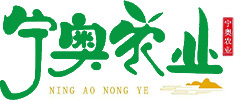How to improve the effect of foliar fertilization?
Release time:
2024-03-27
Author:
Source:
Abstract
The effect of foliar fertilization is related to the types of crops sprayed, the location of spraying, the concentration of spraying and the time of spraying.
① Spraying crop species. Cotton, tobacco, mulberry, potato, broad bean, tomato and other dicotyledonous plants have large leaf area and thin cuticle, and the nutrients in the solution are easy to be absorbed, which often has good effect; rice, barley, wheat, leek and other monocotyledonous plants have small leaf area, the nutrients in the solution are difficult to be absorbed, and the spraying effect is relatively low.
② Spraying site. It should be sprayed mainly on young leaves and functional leaves with strong metabolism. Since the back of the leaf has more pores than the front, the solution is easily absorbed, so it should be sprayed more.
③ Spraying concentration. Different types of fertilizer, the spraying concentration is different. Urea is 0.5-1%, superphosphate 1%-3%, potassium dihydrogen phosphate 0.2-0.5, potassium sulfate 0.5-2%, trace elements are usually about 0.1-0.5.
④ Spraying time. Nutrient uptake by leaves depends on the residence time of the solution on the leaves. Noon temperature is higher, the water in the solution is easy to evaporate, is not conducive to the absorption of nutrients; dew is not dry, should not be applied. It is usually appropriate to spray after 3 pm. Adding 0.1 .2% detergent to the solution can reduce the surface tension of the solution and increase the residence time of the solution on the leaves, thereby increasing the nutrient absorption.
Recommended
What kind of fertilizer is water soluble fertilizer and how to use it effectively
2022-07-28
What are the types of water soluble fertilizers?
2022-01-10
What are the characteristics of water-soluble fertilizers?
2021-11-12





